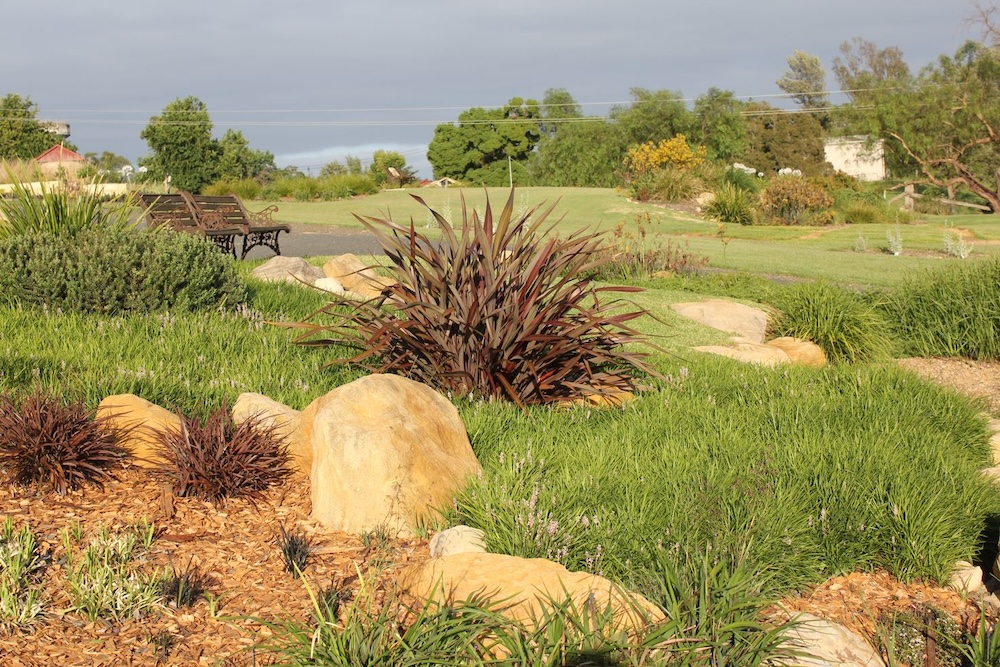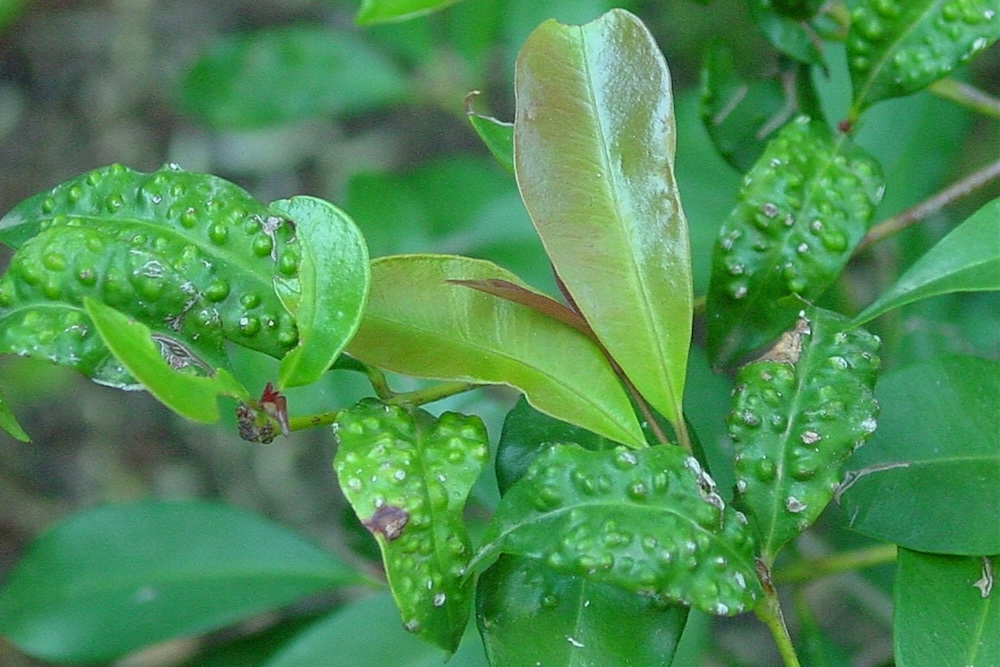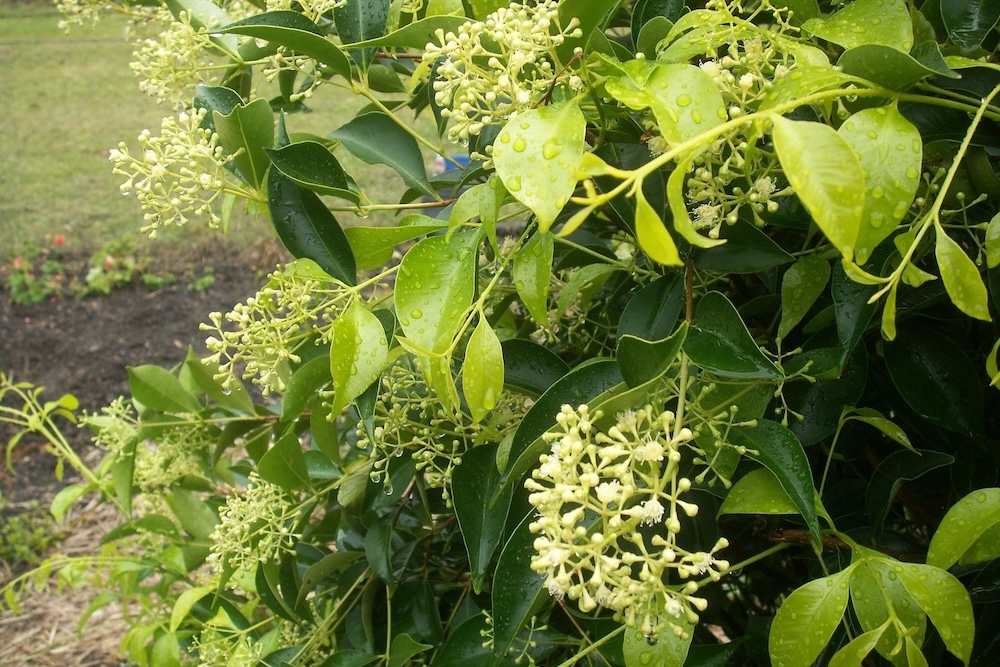They’re commonly perceived as the perfect fit for any garden, regardless of location or conditions.
Designing Gardens that Repel Pests
Did you know that there are natural ways to keep pests at bay without using chemical pesticides?
There are a number of reasons why pests might take hold in your garden, primarily due to garden design, plant choices and maintenance practices. In this article, we’ll describe how to design gardens that repel pests while encouraging plant health and beneficial insects.

Understanding Pests in the Garden
Common Pests in the Garden
Australia’s gardens are home to a wide range of pests. Here’s a brief overview of some of the most common ones:
- Aphids: These small, sap-sucking insects can cause distortions in plant growth and spread diseases.
- Scale insects: Like aphids, they feed on plant sap and can weaken plants over time.
- Mealybugs: Recognisable by their white, cottony appearance, these pests can cause yellowing and wilting in plants.
- Spider mites: These tiny mites can cause significant damage by sucking nutrients from plant leaves.
- Caterpillars: Known for their voracious appetite, caterpillars can defoliate plants if left unchecked.
- Grubs: These soil-dwelling larvae can damage roots and stunt plant growth.
- Weevils: Weevil larvae can bore into plant stems and roots, causing wilting and sometimes plant death.
- Snails and slugs: These molluscs are notorious for eating plant leaves, stems, and seedlings.
- Mammals and birds: Some larger animals, like possums and birds, can also become pests by damaging plants and eating fruits and vegetables.
Keep in mind that “pest” is a term that we use as humans to describe insects that we don’t like. There are examples of both native and exotic organisms within the above list, and almost all of them are incredibly important within the ecosystem. They exist on the bottom of the food chain and feed animals that are higher on the food chain.
A healthy garden will have all types of “pests,” but the difference is that they’re kept in balance with their natural predators.
Besides, without caterpillars, you won’t have any butterflies. Do you really want a garden without butterflies?

The Impact of Pests on Plant Health
Pests can have detrimental effects on plant health. They often feed on plants by sucking their juices, munching on their leaves, or inadvertently damaging them with their habits. This deprives them of essential nutrients and makes them weak and susceptible to diseases. Apart from the direct damage, pests can also act as vectors for plant diseases, further escalating the problem.
On top of damaging plant health, pests can significantly affect the aesthetic appeal of a garden. Chewed leaves, damaged flowers, and stunted growth are all signs of pest infestation that can turn a beautiful garden into an unsightly space.
The Concept of Pest-Resistant Gardens
What is a Pest-Resistant Garden?
A pest-resistant garden is designed to naturally deter pests while promoting the growth and health of plants. These gardens primarily include plants that are inherently resistant to pests. But it’s not just about the right plant selection. Healthy plants, when placed in an environment they thrive in and provided with appropriate care, are better at resisting pests.
Promoting a biodiverse garden that includes pests can feed predatory insect populations, helping keep the pest populations in check.
Benefits of Designing a Pest-Resistant Garden
Designing a pest-resistant garden comes with several advantages. A significant benefit is the reduced reliance on pesticides, which are often harmful to the environment and non-target organisms. By selecting pest-resistant plants and using other natural strategies (which we’re about to discuss) to deter pests, you can maintain a healthier garden.
A pest-resistant garden also tends to be more robust and better-looking, as the plants are less likely to suffer from pest-related damage.
Creating a Pest-Resistant Garden
Choosing the Right Plants
The most effective way to deter pests in your garden is by choosing the right plants. Some plants have natural pest-repelling properties, making them excellent additions to any pest-resistant garden. And plants that you know will thrive in your garden’s conditions will be healthier, meaning that they’ll be more naturally resistant to pests and diseases. Conversely, if you choose the wrong plants for your garden’s environment, they’ll become weak and easy targets for pests.
For example, moisture-loving, shade-loving plants that are planted in sandy sunny spots will always suffer. Some plants are particularly susceptible to certain pests, such as lilly pillies and the sap-sucking psyllids (which are a relative of aphids and scale). However, plant breeders like us at Ozbreed have bred highly resistant cultivated varieties, such as Sublime Acmena.

Companion Plants That Naturally Repel Pests
Certain plants produce chemicals that naturally repel certain pests. For instance, marigolds (Tagetes spp.) are known to deter nematodes, while garlic (Allium sativum) can repel aphids. Another example is wormwood (Artemisia absinthium), which is effective against various garden pests due to its strong scent and bitter taste. Similarly, lavender (Lavandula angustifolia) and rosemary (Rosmarinus officinalis) are known to deter a wide range of pests, including moths, beetles, and flies.
These plants don’t just repel pests from attacking themselves, they can also potentially deter pests from visiting nearby plants that would usually be susceptible.
Attracting Predatory Insects with Small Flowers
Plants with small flowers, such as sweet alyssum (Lobularia maritima) and dill (Anethum graveolens), can attract the adult life-forms of beneficial insects like hoverflies, lacewings, and parasitic wasps. These predatory insects will lay their eggs in or near pests, so that their larval life-forms can predate upon them.
Birds like golden whistlers, native robins, and native finches are all examples of insect-loving birds. You can learn more about these types of birds here.
Maintaining Soil Health
Healthy soil is the foundation of a healthy, pest-resistant garden. It provides plants with the necessary nutrients, helps retain moisture, and supports a diverse community of beneficial microorganisms. Healthy plants are able to produce compounds that make them more resistant to pests and diseases, whereas unhealthy plants actually attract pests.
Understanding Different Soil Types
There are four main types of soil: sand-dominant, silt-dominant, clay-dominant, and loam.
- Sand-dominant soil is gritty and drains quickly but doesn’t hold onto nutrients well. It can also become hydrophobic due to plant waxes coating the large particles.
- Silt-dominant soil has a smooth texture and retains water longer than sandy soil. However, it can become compacted easily.
- Clay-dominant soil is heavy and sticky when wet and hard when dry. It holds onto nutrients well but has poor drainage and can also become compacted.
- Loam is the ideal soil type for most plants. It has a balanced mix of sand, silt, and clay, offering good nutrient retention, moisture management, and soil structure.
Improving Soil Health
The key to improving soil health is often as simple adding organic matter, such as compost or well-rotted manure. Organic fertilisers improve the soil’s structure, enhance its ability to hold onto nutrients and water, and foster beneficial soil organisms. They also provide your plants with the nutrients they need to grow healthily.
For sandy soil, incorporate organic matter to improve its nutrient-holding capacity. For silty and clayey soils, organic matter can help prevent compaction and improve drainage. If your garden has loamy soil, regular additions of organic matter will help maintain its quality. Compacted or heavy clays can be broken apart using gypsum to improve drainage and structure. Meanwhile, hydrophobic sandy soils can be amended using a soil wetter as a short-term fix.
Advanced Strategies for Pest-Resistant Gardens: Ecosystem Services
Biological Control Methods
Biological control methods are an effective and environmentally friendly way of managing pests in your garden. This is just a fancy way of saying that you’re introducing organisms to help you with your pests – this usually (but doesn’t always) refer to predatory insects. It’s one of the major methods of pest control within an Integrated Pest Management (IPM) approach. If you’d really like to delve deeply into natural pest control, read this article that I wrote.
Using Beneficial Insects
Purchasing beneficial insects like ladybirds, lacewings, predatory mites, and micro wasps can help control pests in your garden. These insects are natural predators of many common garden pests. For instance, ladybirds and lacewings are voracious eaters of aphids, while predatory mites can help control spider mite populations. One of the best online vendors for these insects is Bugs for Bugs, who can offer tailored advice based off photos you send them.

Creating a Predator-Friendly Environment
Purchasing predatory insects is a great alternative to pesticides, but without the right habitat, those predatory insects will simply fly away or die after they’ve done their job. As mentioned above, you can also create an environment that naturally attracts these helpful creatures.
Physical Control Methods
Physical control methods can provide immediate relief from pest infestations and can be especially useful for larger pests like slugs and snails.
Using Barriers
Barriers can prevent pests from reaching your plants. Netting can protect fruit trees from birds, while copper tape can deter slugs and snails. Similarly, insect mesh or horticultural fleece can guard against flying insects and caterpillars.
Spraying Plants
A strong jet of water can dislodge pests like aphids and spider mites from your plants. This method is a simple, effective, method of knocking pest populations down rapidly without harming the plant or the environment.
Non-Chemical Horticultural Oils
Non-chemical horticultural oils can suffocate pests by blocking their air holes. They are safe for most plants and beneficial insects, making them an excellent choice for pest control in your garden. They will also kill off-target beneficial insects as well as reducing their food source, so save this method for when pest populations get out of hand.
Homemade White Oil Recipe
You can make your own white oil at home using just three ingredients: water, vegetable oil and soap. Mix a cup of oil with a quarter cup of detergent or soap, with a litre of water before spraying it on your plants.
Neem Oil: Is “Natural” the Same as “Good”?
Neem oil is a natural pesticide derived from the seeds of the neem tree. It can control a wide range of pests, from aphids and mites to fungal diseases. However, like any pesticide, it should be used judiciously as it can also affect beneficial insects. Neem oil is a systemic pesticide – even though it’s natural it’ll make your plants poisonous to a wide range of insects (including beneficial insects), so is there really a difference between that and using a chemical pesticide if you really think about it?
Monitoring
Regular monitoring is crucial for early detection and management of pest problems. By regularly inspecting your plants, you can spot the signs of pest infestations early and take action before they become a major problem.
How to Monitor Your Plants
Check your plants regularly for signs of pests or disease. Look under leaves, around stems, and in the soil. If you notice any changes, such as discolouration, spots, or unusual growths, investigate further as these could be signs of pest activity. Whether you’re tending to your own garden or maintaining landscapes for clients, regular monitoring should be a part of your routine. It’s especially important if you only visit the garden every few weeks, as a lot can happen in that time.
Daniel’s Wrap
Designing a pest-resistant garden is an ongoing process that requires knowledge, patience, and a bit of trial and error. But the rewards—a healthy, thriving garden with minimal reliance on harmful pesticides—are well worth the effort.
Don’t wait! Start planning and creating your own pest-resistant garden today.




This Post Has 0 Comments